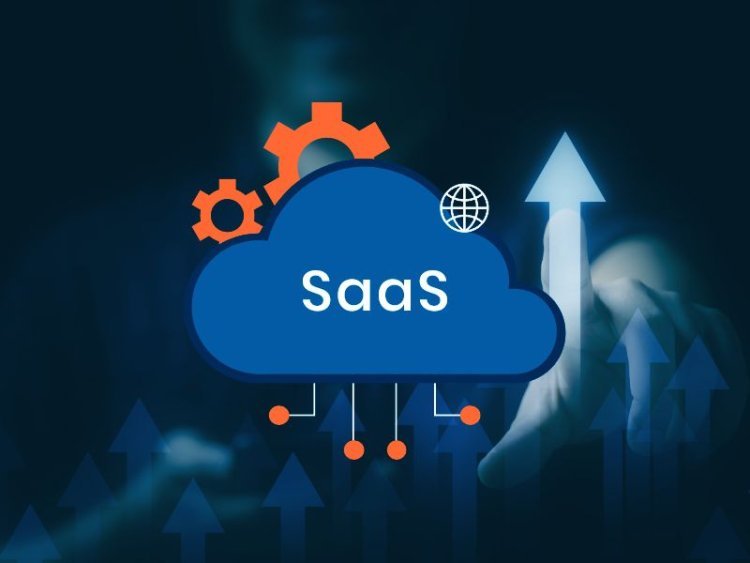Software Development as a Service (SDaaS) in 2025
In 2025, the world of software development is evolving rapidly, and Software Development as a Service (SDaaS) is at the forefront of this transformation. Businesses are increasingly embracing SDaaS to streamline their software projects, reduce costs, and gain access to specialized talent on-demand.

In 2025, the world of software development is evolving rapidly, and Software Development as a Service is at the forefront of this transformation. Businesses are increasingly embracing SDaaS to streamline their software projects, reduce costs, and gain access to specialized talent on-demand. This comprehensive guide explores the future of SDaaS, its defining features, benefits, and how it is shaping the software development landscape.
What is Software Development as a Service?
Software Development as a Service (SDaaS) is a flexible, scalable, and cost-effective outsourcing model that enables businesses to access expert software development resources without the need for in-house teams. SDaaS providers offer services ranging from custom software creation to maintenance and support, allowing organizations to focus on their core competencies while leaving the technical work to external specialists.
The SDaaS Model in 2025
In 2025, SDaaS has evolved to meet the growing demands of businesses in a fast-paced, digital-first world. Key advancements include:
1. AI-Driven Development Tools
SDaaS providers now leverage artificial intelligence to enhance code quality, automate testing, and speed up deployment. These tools reduce manual effort and improve accuracy.
2. Seamless Integration with DevOps
SDaaS seamlessly integrates with DevOps pipelines, enabling continuous integration and continuous deployment (CI/CD) for faster and more reliable software releases.
3. Global Access to Niche Expertise
Businesses have access to a vast network of specialized developers across the globe, ensuring that they can find experts for even the most complex technologies.
4. Enhanced Security and Compliance
With data breaches on the rise, SDaaS providers prioritize robust security measures and compliance with international standards, safeguarding sensitive business information.
Benefits of Software Development as a Service
The adoption of SDaaS in 2025 offers numerous advantages:
1. Cost Efficiency
Businesses avoid the high costs associated with hiring, training, and maintaining in-house teams. Instead, they pay only for the resources and services they need.
2. Flexibility and Scalability
SDaaS allows organizations to scale development teams up or down based on project requirements, making it an ideal choice for dynamic markets.
3. Faster Innovation
By outsourcing development to experts, companies can accelerate innovation and bring products to market faster, maintaining a competitive edge.
4. Risk Mitigation
Experienced SDaaS providers reduce project risks by adhering to best practices, using proven frameworks, and offering specialized knowledge.
Common Use Cases for SDaaS in 2025
The versatility of SDaaS makes it applicable to a wide range of business scenarios:
1. Startups Seeking Rapid Growth
Startups leverage SDaaS to develop minimum viable products (MVPs) and scale quickly without heavy upfront investment.
2. Enterprises Managing Complex Projects
Large enterprises use SDaaS to augment their internal teams, handling multiple projects simultaneously with specialized expertise.
3. Custom Software for Unique Business Needs
Businesses with specific operational requirements turn to SDaaS for bespoke software tailored to their goals.
4. Maintenance and Upgrades
SDaaS providers offer ongoing maintenance, ensuring that software remains up-to-date and secure.
SDaaS vs. Traditional Development Approaches
In 2025, the differences between SDaaS and traditional development models are more pronounced:
| Aspect | Traditional Development | SDaaS |
|---|---|---|
| Cost Structure | High fixed costs | Pay-as-you-go |
| Scalability | Limited by in-house resources | Rapid, on-demand scaling |
| Time-to-Market | Longer development cycles | Accelerated delivery |
| Access to Talent | Local hiring constraints | Global network of specialists |
| Innovation Speed | Slower due to internal limitations | Faster with cutting-edge technologies |
Choosing the Right SDaaS Partner in 2025
The right SDaaS partner can make or break a project. Consider these factors when evaluating providers:
-
Technological Expertise: Ensure the provider is proficient in the technologies relevant to your project.
-
Proven Track Record: Look for case studies and client testimonials that demonstrate success.
-
Collaborative Approach: Effective communication and transparency are key to a smooth partnership.
-
Security Standards: Verify that the provider follows robust security protocols and compliance regulations.
-
Adaptable Pricing Models: Choose a provider with flexible contracts that align with your business needs.
The Future of SDaaS
The future of SDaaS is bright, with innovations such as:
-
AI-Augmented Development: Enhanced automation for coding, debugging, and testing.
-
Blockchain Integration: More secure and decentralized software solutions.
-
Personalized Development Services: Tailored offerings based on predictive analytics.
Conclusion
Software Development as a Service (SDaaS) in 2025 represents a revolutionary shift in how businesses approach software creation. By embracing this model, organizations gain agility, access to top-tier talent, and cost efficiency, positioning themselves for sustained growth and innovation in a competitive market. Whether you are a startup, mid-sized company, or global enterprise, SDaaS offers the tools and expertise needed to thrive in the digital age.
What's Your Reaction?













